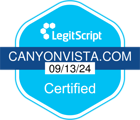What Are Opioids?
Opioids, sometimes called narcotics, are a type of drug that include prescription medications and the illegal drug heroin. Prescription opioids are typically prescribed to reduce pain after surgery, an injury, or when someone has severe pain from cancer or other health conditions.
Prescription Opioids
According to the National Institute on Drug Abuse, some prescription opioids are naturally derived from the opium poppy plant and others are made in labs by scientists. Both natural and synthetic opioids have the same chemical structure. Prescription opioids contain chemicals that relieve pain and help the body relax. These drugs are classified by the United States Drug Enforcement Administration (DEA) as Schedule II drugs.
Common prescription opioid medications include:
- Oxycodone (Percocet, OxyContin)
- Hydrocodone (Vicodin)
- Oxymorphone (Opana, Dilaudid, Exalgo)
- Codeine
- Fentanyl (Abstral, Actiq, Duragesic, Fentora)
- Morphine (MS Contin, Kadian, Avinza, Morphabond)
When prescribed legally for medical purposes and taken as directed for a short time, opioids are safe to use. However, because of the relaxed, euphoric feeling they produce, opioids can quickly lead to abuse, dependence, and addiction.
Illegal Opioids: Heroin & Synthetic Street Drugs
Made from morphine, heroin is an extremely dangerous drug. Highly addictive physically and psychologically, heroin causes the person to feel an intense rush of euphoria or high, followed by a state of twilight sleep and wakefulness. Heroin users rapidly move from abuse to addiction. The risk of overdose or death for heroin users is high. Heroin is classified by the DEA as a Schedule 1 drug, meaning that, in the United States, it has no accepted medical use and has a high potential for abuse.
Illegal opioids are sold on the street and online. Commonly called street drugs, they look and act like prescribed medications. It is not legal to have, buy, sell, or share these opioids. When a person uses street drugs, they are likely to become addicted. They may overdose or die since there is no way to know what is really in the substance or how strong it is. Tablets, capsules, and powders often contain contaminants or dangerous fillers such as flour, cornstarch, or other drugs. Each drug dose could be different.
Street drugs can be much stronger than prescribed opioid medications.
- The dangerous designer opioid drug known as Pink, Pinky, or U4 is seven times stronger than morphine.
- Fentanyl is 50 times stronger than heroin and 100 times more potent than morphine.
- Carfentanil is a drug used by veterinarians to sedate elephants, horses, and other large animals. Even a tiny amount of Carfentanil is lethal to humans. It is 10,000 times stronger than morphine.
Both legal and illegal opioids can be swallowed, injected, or snorted. They can also be used in patch or suppository form.
How Do Opioids Work?
Opioids work by binding and interacting with the opioid receptor cells in the brain, spinal cord, and other organs. Once activated, the brain’s neurotransmitters release a large amount of the endorphin dopamine, changing how the individual perceives pain. It leads to pain relief and causes feelings of relaxation and pleasure. There is a strong overall sense of well-being. The relaxed, euphoric feeling often has a strong effect on the person. It makes them want to take the drug again so they can repeat the experience.
Opioid Addiction
Opioid addiction develops over time from regular non-medical use, misuse or prolonged use of prescribed medications, or use without medical supervision. Opioid abuse leads to dependence, causing the person to crave the substance. Satisfying their intense need for the drug is the most important thing to them regardless of any harm or negative consequences it causes. They have an increased tolerance to the effects of the drug and need increased amounts to satisfy their cravings. The individual becomes addicted to the substance and experiences withdrawal symptoms if they reduce or stop their use.
Signs of Opioid Addiction
When a person has an opioid addiction, they cannot control their drug use. They often lose interest in things they enjoy doing and withdraw from family and friends. Problems with personal relationships, work, or school are common. They may have legal or financial difficulties. Their personal hygiene becomes unimportant. Often they are irritable, agitated, nervous, sad, depressed, or angry. What they say may not make sense, or they may talk very fast. Their speech may be slurred, or they may speak very slowly. They may have headaches, nausea, cramping, vomiting, constipation, and diarrhea. Their pupils will appear constricted.
Each person is different, and the signs of opioid addiction will vary from one person to another.
Do You Need Help?
If you or a loved one struggles with an addiction to opioids or any other substance, help is available. Call Canyon Vista Recovery Center, located in Mesa, Arizona, and speak to a caring professional. We will answer your questions and help you take the first step toward living your life free of drugs or alcohol.











